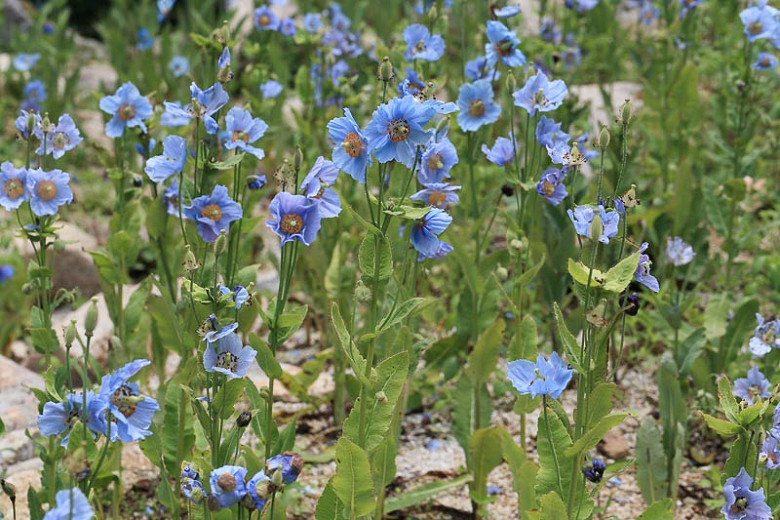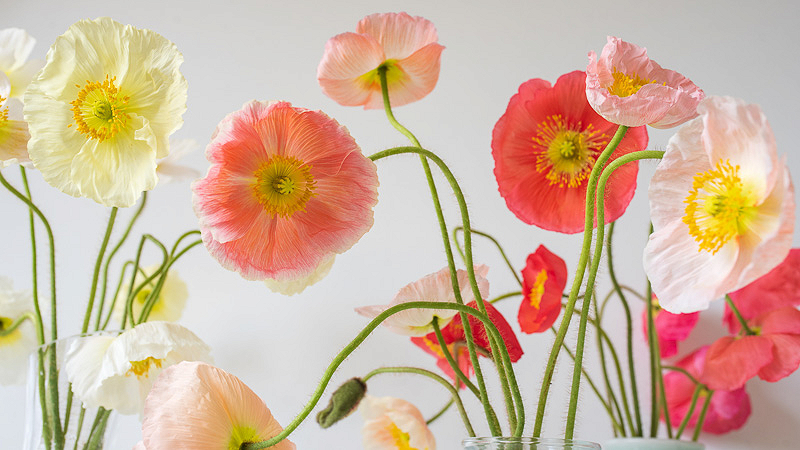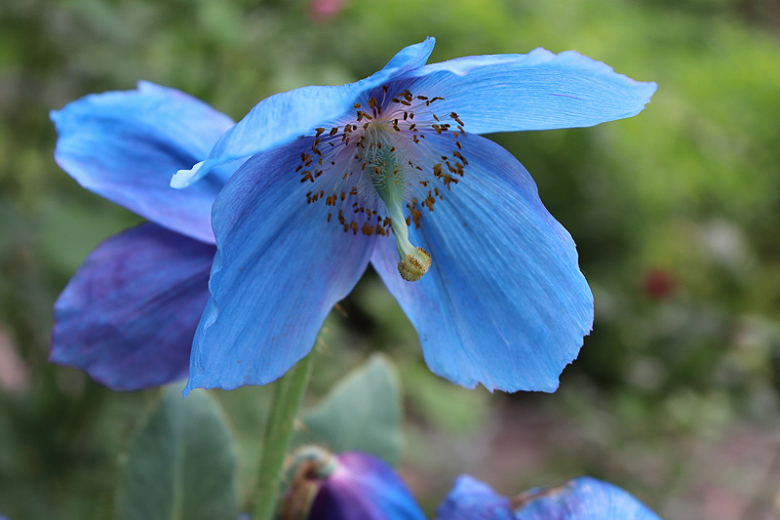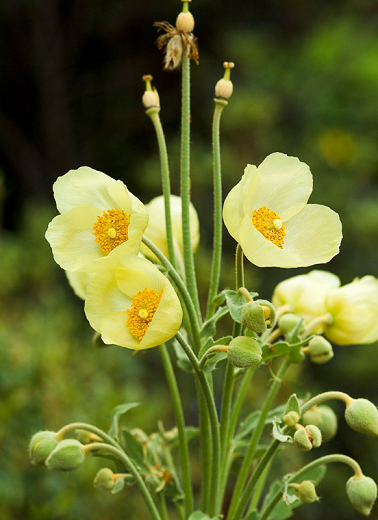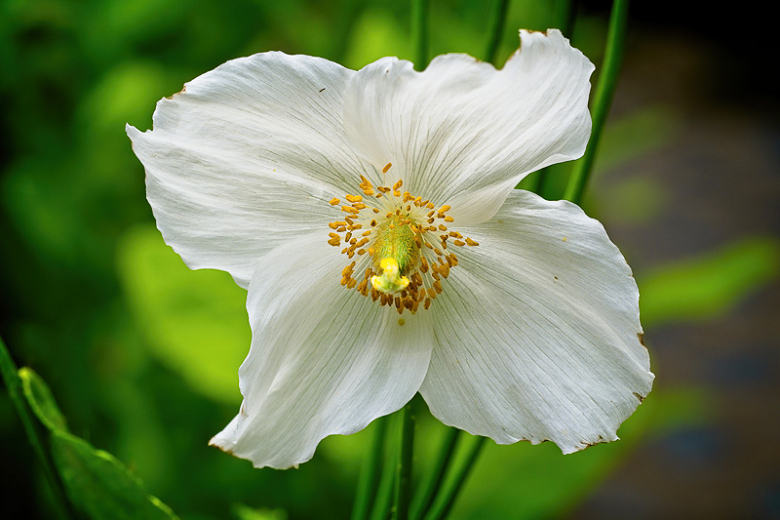Meconopsis betonicifolia (Blue Poppy)
Noted for its beauty and grandeur, Meconopsis betonicifolia (Blue Poppy) is a short-lived perennial boasting large, silky, cup-shaped, clear blue flowers, 3-4 in. wide (8-10 cm), with contrasting golden stamens and a short ivory-white style.
Noted for its beauty and grandeur, Meconopsis betonicifolia (Blue Poppy) is a short-lived perennial boasting large, silky, cup-shaped, clear blue flowers, 3-4 in. wide (8-10 cm), with contrasting golden stamens and a short ivory-white style. Borne in succession on erect leafy stems, the striking blossoms rise with majesty from a basal rosette of hairy, oblong leaves and give way to narrow seed pods. Occasionally monocarpic, Blue Poppy will bloom in summer, then make seeds and die. However, this clump-forming perennial will persist and flower year after year, if given suitable conditions and care. Planted in small groups, the delicate flowers will give a color punch to your shady borders and draw attention from late spring to early summer.
- Grows in clumps up to 3-4 ft. tall (90 – 120cm) and spreads 12-24 in. (30-60 cm). Will happily self-seed in good growing conditions to create a lovely colony.
- Prefers part shade in humus-rich, neutral to slightly acidic, moist but well-drained soils. Make sure the soil has plenty of organic matter. Do not allow the soil to dry out during the growing season.
- This plant does not respond well to high summer heat and humidity but thrives in areas with cool damp summers. Shelter from cold, dry winds.
- The acidity of the soil will impact the color of your poppies: the more alkaline the soil, the more purple the color will be.
- Apply a balanced fertilizer in spring and mulch round plants with garden compost or well-rotted manure.
- Perfect for beds and borders, underplanting shrubs, cottage gardens, and woodland gardens.
- Deer and rabbit resistant
- Cut down to the base in late fall.
- Propagate by seed or by division after flowering but can be short-lived.
- May be affected by slugs and snails or downy mildew
- Native to the Himalayas and surrounding regions.
Requirements
| Hardiness | 7 – 8 |
|---|---|
| Heat Zones | 5 – 8 |
| Climate Zones | 1, 1A, 1B, 2, 2A, 2B, 3, 3A, 3B, 4, 5, 6, 17, A1, A2, A3 |
| Plant Type | Perennials |
| Plant Family | Meconopsis – Himalayan Poppy |
| Exposure | Partial Sun |
| Season of Interest | Spring (Late)Summer (Early) |
| Height | 3' – 4' (90cm – 120cm) |
| Spread | 1' – 2' (30cm – 60cm) |
| Spacing | 18″ – 24″ (45cm – 60cm) |
| Water Needs | Average |
| Maintenance | Average |
| Soil Type | Clay, Loam |
| Soil pH | Acid, Neutral |
| Soil Drainage | Moist but Well-Drained |
| Characteristics | Showy |
| Tolerance | Deer, Rabbit |
| Garden Uses | Beds and Borders, Underplanting Roses and Shrubs |
| Garden Styles | Informal and Cottage |

